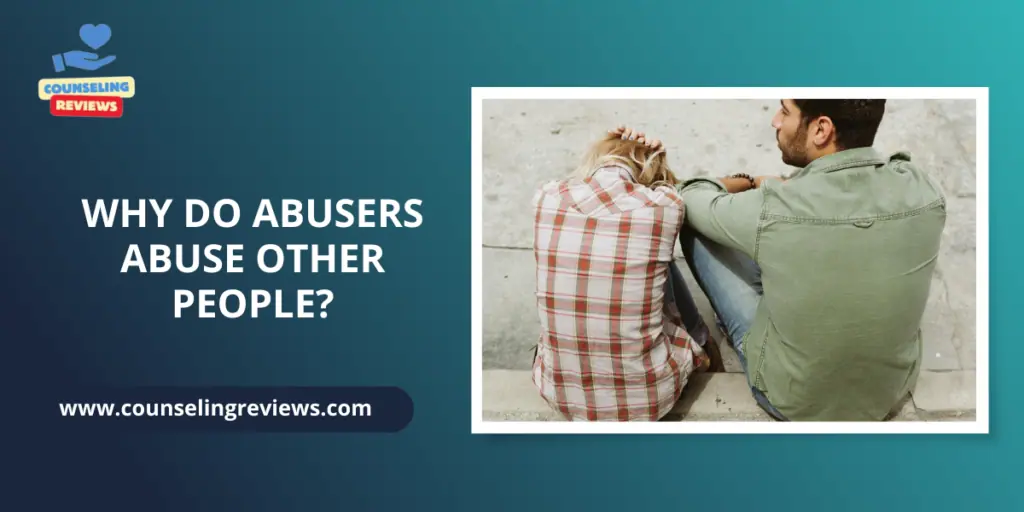Annually, there are more than 3 million reports of domestic violence occurring against both men and women. Considering many victims do not report their abuse, this number is likely lower than the actual rate of domestic violence. For this article, we will be addressing domestic violence within intimate partner relationships.
Domestic violence between intimate partners might include any combination of the following types of abuse: sexual, financial, emotional, and physical. Violence also includes slapping, shoving, throwing things, and breaking objects. The overriding goal of violence is to obtain power and control and to intimidate the victim into submission.
Anyone, regardless of socio-economic status, race, religion, nationality, gender, or sexual orientation, can be a victim of abuse or an abuser.
Understanding the Psychology of Abusers
Many abusers grew up in households where they were abused or witnessed abuse of loved ones. Though this may help create sympathy for the abuser, there are also many victims of abuse who do not repeat the abuse. Abusing others is a conscious and deliberate choice – abusive behavior is not a mental illness.
Abusers tend to have the following qualities:
- Poor self-esteem
- Unrealistic relationship expectations
- Possessive of their partner
- A tendency to isolate victims from their friends and family
- Difficulty recognizing and acknowledging their feelings and emotions
- Hypersensitive to perceived insults or criticisms
- Difficulty regulating their emotions
- More likely to abuse substances
- Impulsive
- Blaming mentality, difficulty taking accountability for their actions or perceived mistakes
- Manipulative
- The ability to be very charming
Common Motivations for Abusive Behavior
The underlying cause of abusive behavior is the overwhelming need and desire for power and control. There is limited research regarding the motivations behind abuse. Since recognizing and understanding feelings and emotions is oftentimes challenging for abusers, abusers may not be able to accurately determine their motivations behind abuse.
The research available regarding motivations behind abuse indicates there are about 6-7 typical motivations behind abusive behavior.
- Power and Control: This is the ultimate motivational factor for abusers. The abuser often feels out of control emotionally or in their everyday life, and asserting power and control over the victim provides a false sense of power and control for the abuser.
- Self-Defense: Abusers may believe they have to physically defend themselves. This is more common among female abusers.
- Express Negative Emotions: Abusers have learned to express negative emotions such as anger through violence.
- Communication Difficulties: Without healthy and effective communication skills, abusers may communicate their anger with violence.
- Retaliation: Abusers may feel emotionally hurt by their partner and, therefore, feel the right to seek retaliation through violence.
- Jealousy: Abusers report feeling overcome and overwhelmed with jealousy and act out with violence.
- Other: There may be a host of motivations for abuse. These might include job loss, financial strain, illness, substance abuse, and more.
Impact on Victims and Relationships
The emotional consequences of domestic violence are significant for survivors of abuse. Post Traumatic Stress Disorder (PTSD) is a common diagnosis many victims receive during assessment for treatment. Depression and suicidal ideation are also common mental health issues victims deal with during and after a relationship with an abuser.
Physically, victims can endure considerable harm and even death. According to the National Statistics Domestic Violence Fact Sheet, the presence of a gun in the home where domestic violence is occurring increases the risk of homicide by 500%.
The relationship between the abuser and victim cannot survive without significant treatment. The likelihood of repeat abuse is great. The National Shelter Organization states:
While just 10 to 18 percent of those arrested for domestic violence are arrested again within six months, 15 to 30 percent face a second arrest within 28 months, and up to 60 percent are rearrested within 10 years.
Keeping in mind abuse is often underreported, these statistics paint a very bleak picture for those in domestic violence relationships.
Why do Victims Stay?
Victims stay in the relationship for a variety of reasons.
- Nowhere to go
- No friends, family, or support system
- No financial freedom
- Low self-esteem
- Minimizing or rationalizing the abuse
- Childcare concerns
- Love for the abuser
- Mistrust of law enforcement
Breaking the Cycle of Abuse
The cycle of violence typically looks like this:
- A build-up of tension: The abuser might confront the victim about something they are upset about, such as an unintentional slight.
- The attack: The abuser strikes.
- Remorse and apology: This is where the abuser shows he is sorry for their actions and where the victim is often sucked back into the relationship.
- Honeymoon phase: The abuser dotes on the victim in an attempt to keep them in the relationship and to absolve themselves of any guilt. The victim may believe the abuser is capable of change and will cease abusive behavior.
As a therapist, the best advice for breaking the cycle of abuse is to leave. Unfortunately, I have yet to see research that indicate successful abuse reform methodologies.
Though some people might believe couples counseling could be helpful, it is not recommended. Due to the abuser’s tendency to use their charm and manipulation tactics on the therapist, couples counseling is not beneficial for this issue.
Support and Resources for Victims
Make a safety plan to leave the abuser. Some things to include in a safety plan are:
- Designate a safe place to go to with a friend or family member (do not go alone).
- Make an extra set of keys for your house and car and keep them hidden and accessible only to you.
- Remove any weapons from the home.
- Alert neighbors that if they hear yelling or loud noises to call the police immediately.
- Gather any important paperwork you might need, such as bank account numbers, passports, legal paperwork…
- Pack a bag for you and your kids and store them in a hidden place.
- If it’s not safe for you to leave, call 911.
The National Domestic Violence Hotline is 1(800) 799-7233 and is available 24 hours/day, 365 days a year. They can help you develop a customized safety plan for your circumstances and also help you locate local services such as emergency shelter.
The Family Violence Prevention Services offers help to find shelters in 50 states. In addition to helping victims formulate a safety plan, they also help victims find counseling, support groups, housing options, and legal services. Their number is 1(800)537-2238.
Conclusion
Leaving an abusive relationship is difficult, but support is available. Calling the National Domestic Violence Hotline at 1(800) 799-7233 is a great start to begin formulating next steps for surviving and healing. Online or in-person counseling with a therapist who is experienced in working with domestic violence issues is very effective in helping you recover and get your life back on track. Though you may be a victim now, you can become a survivor and eventually a thriver with proper support.





